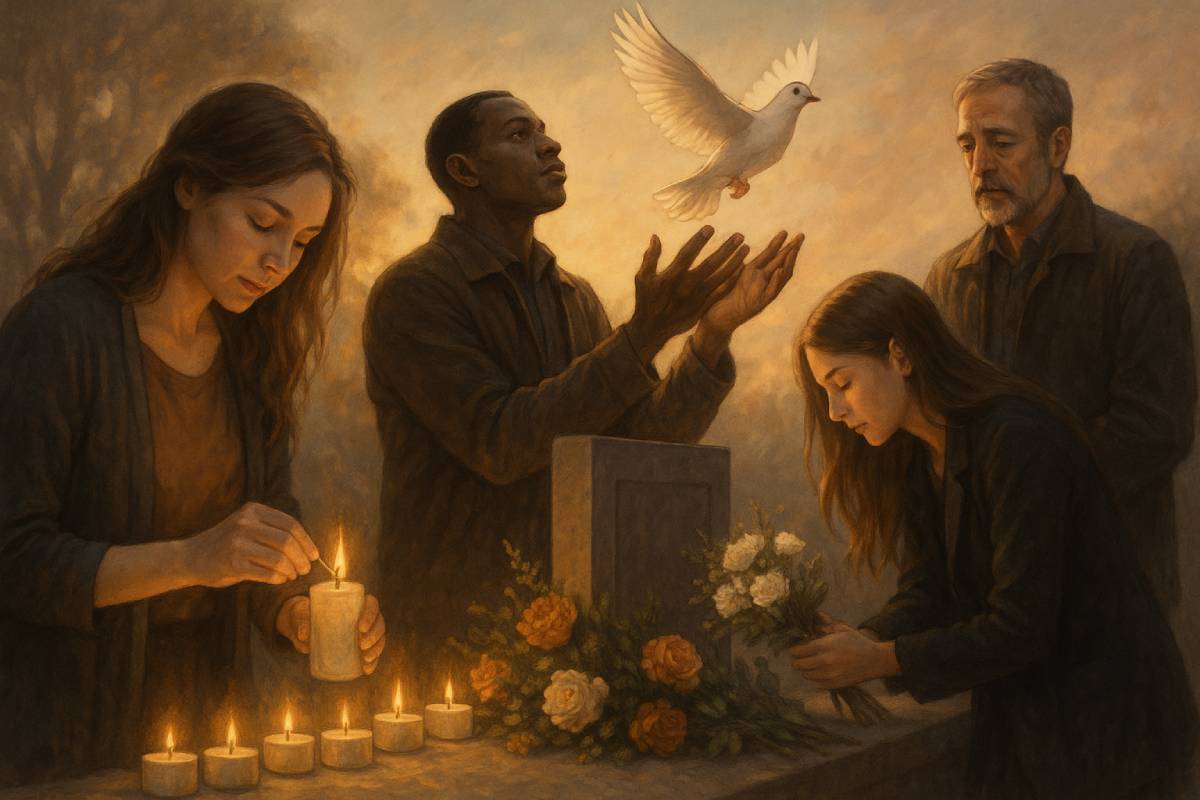Losing someone close to us is one of life’s most profound challenges. During such difficult moments, finding ways to process grief and honor the memory of a loved one becomes essential.
One meaningful way people cope is through symbolic acts, gestures, or rituals that represent feelings, memories, and connections beyond words. These acts hold deep emotional significance and can help transform pain into healing.
Understanding Symbolic Acts in Grief
Symbolic acts are actions or rituals that stand for something larger than themselves. In times of loss, these acts help give form to complex emotions and create a bridge between the physical world and the inner experience of grief. They often involve objects, ceremonies, or traditions that carry meaning unique to the individual or community.
Examples include lighting a candle, planting a tree, releasing balloons or lanterns, or creating a memorial space. These gestures express love, remembrance, and respect, allowing mourners to externalize their feelings in a tangible way.
Why Symbolism Matters in Mourning
Grief is often overwhelming and difficult to articulate. Symbolic acts provide a language that transcends words, offering comfort and connection when verbal expression feels inadequate. They allow mourners to:
- Feel connected: Performing a symbolic act can foster a sense of closeness to the departed, maintaining bonds even after physical separation.
- Find meaning: Rituals create structure and purpose during chaotic emotional times, helping people find a narrative in their loss.
- Express emotions: Symbolism allows the release of feelings like sorrow, love, anger, or gratitude in a safe and meaningful manner.
- Create lasting memories: Acts like planting a memorial tree or dedicating a plaque become enduring reminders of a loved one’s life.
By engaging in these symbolic practices, individuals and communities create shared spaces for remembrance and healing.
Personalizing Symbolic Acts
The most impactful symbolic acts are those that resonate personally. Whether rooted in cultural traditions, religious beliefs, or individual creativity, the key is authenticity. Personalized acts reflect the unique story and personality of the person being honored.
For example, planting a tree in memory of someone who loved nature is a powerful symbol of life continuing and growth even after loss. Choosing a particular flower, song, or item that had special meaning to the deceased can also serve as a heartfelt tribute.
Options like A Living Tribute memorial allow families to customize memorial gifts that carry symbolic significance, such as planting trees or supporting conservation efforts. These gifts offer a beautiful way to commemorate life and create a positive impact in memory of a loved one.
The Role of Community and Shared Rituals
Symbolic acts are often most powerful when shared with others. Group rituals, whether informal gatherings or structured ceremonies, provide collective support and validation of grief. Coming together to light candles, share stories, or release symbolic objects creates a sense of belonging and reminds mourners they are not alone.
These shared acts can strengthen communal bonds and offer comfort through collective memory. They help normalize grief, encourage expression, and foster resilience.
Moving Forward Through Symbolism
While symbolic acts cannot erase loss, they can guide us toward healing by honoring the past and inspiring hope for the future. Engaging in meaningful rituals invites reflection, connection, and growth, helping transform grief into a source of strength.
In times of sorrow, embracing the power of symbolism offers a way to hold on to love, celebrate a life, and find peace amidst the pain. Whether through a simple gesture or a lasting memorial, these acts carry the essence of memory and the promise of healing.




















